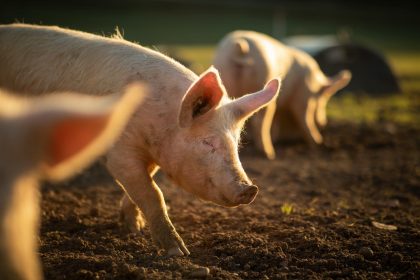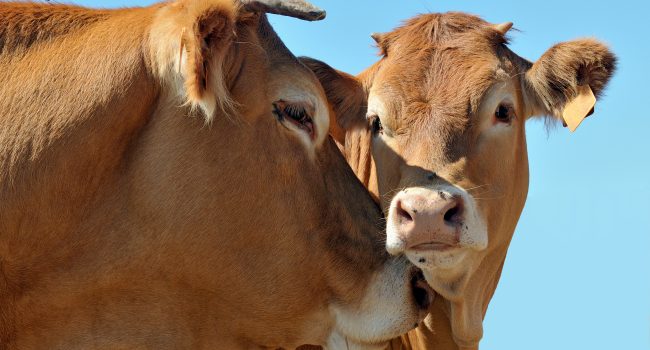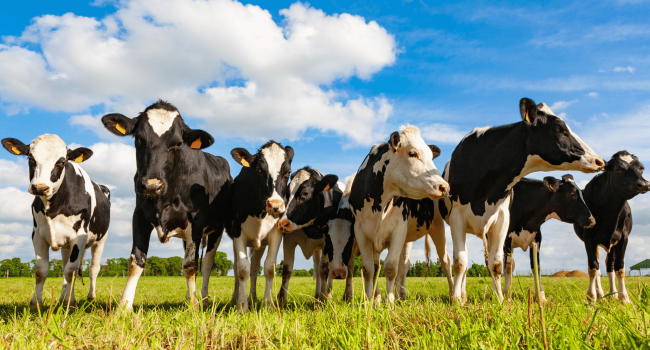The Challenge of Sustainability
Having drastically changed in the past three decades, swine production systems are now being confronted with the key challenges of maximizing feed efficiency while minimizing production costs and environmental impacts (Pomar and Remus, 2019), in order to continue providing the ever-growing human population with a source of animal protein.
In 2019, pork was indeed the most widely eaten meat worldwide (36%), according to the UN Food and Agriculture Organization.
In this context, sustainability in swine production can notably be implemented via a “high input/high output” system based on sustainable intensification, maximizing animal protein production efficiency on a limited land surface, while in parallel minimizing environmental impacts.
This system can be further improved by fine-tuning the use of inputs through precision agriculture, particularly precision feeding, as it is known that improving nutrient efficiency can reduce the environmental impact of pig production; this is particularly important in the most intensive pig production areas, where the issue lies mainly with nitrogen and phosphorus excretion, which are reaching alarmingly high levels (Strid Eriksson et al., 2005; Garcia-Launay et al., 2014).
This excessive excretion of nutrients could be reduced by providing an individual animal with its required dietary levels, thus re-evaluating the nutritional and feeding programs in use – with the added benefits of improving nutrient efficiency and reducing production costs (Pomar et al., 2015; Andretta et al., 2016).
The Concept of Precision Feeding
Specifically, precision feeding strategies have been suggested as a way forward, as they aim to accurately match nutrient supply to the demand of animals by formulating feeds that account for the dynamic changes in nutrient requirements, preferably at the individual level.
This is in contrast to standard feeding practices, which typically neglect variation in nutrient requirements among individuals, as they involve formulating feeds that satisfy the estimated nutrient requirements of a nominal average pig in a population, at a given static reference point specified by body weight or age (Misiura et al., 2021).
Therefore, precision livestock farming is an innovative production system approach that can be defined as the management of livestock using the principles and technologies of process engineering (Wathes et al., 2008).
“Precision animal nutrition” or “precision feeding” is part of the precision livestock farming approach and involves the use of feeding techniques that allow the proper amount of feed with the suitable composition to be supplied in a timely manner to a group of animals (Parsons et al., 2007; Cangar et al., 2008; Pomar et al., 2014) or to individual animals (Andretta et al., 2014; Andretta et al., 2016).
Precision feeding offers immediate and tangible benefits to the pork producer given that feeding pigs individually with daily tailored diets reduces lysine intake by more than 25%, feeding costs by more than 8%, nitrogen and phosphorus excretion by nearly 40% (Andretta et al., 2014; Andretta et al., 2016), and greenhouse gas emission by 6% (Andretta et al., 2018).
Implementation of Precision Feeding
Feeding accounts for more than 65% of the cost of producing pigs (Cloutier et al., 2015), highlighting the economic importance of nutrient efficiency.
In conventional production systems, growing–finishing pigs are generally housed in groups and fed the same ration for a certain period of time, which is usually formulated to satisfy the animal with the highest requirements in the group (Hauschild et al., 2010).
However, using a single feed means that some pigs will be underfed, leading to reduced growth performance, whereas others will be overfed, resulting in nutrient wastage; these overfed animals harm the production system and the environment, due to the high levels of nitrogen and phosphorus excretion (Pomar et al., 2010).
Precision feeding addresses these issues by providing each pig in the herd with feed tailored to its specific requirements on a daily basis (Pomar et al., 2009; Hauschild et al., 2012; Pomar et al., 2014). The implementation of precision feeding systems requires accurate knowledge of the animals’ nutrient requirements and the development of feeding devices and numerical procedures capable of providing each pig with the required amount of nutrients at each feeder visit (Hauschild et al., 2012). Therefore, with the help of smart feeders, new sensors and information technology, modern precision feeding systems for growing pigs have demonstrated their ability to meet individual requirements more efficiently (Cloutier et al., 2015).
Another illustration of precision feeding concerns gestating sows, where it reduces feed costs by improving the sow’s efficiency (Gaillard et al., 2021).
This particular precision feeding strategy was based on nutritional models (prediction of daily individual nutrient requirements aimed at feeding an animal with the right ration (allowance and composition) at the right time); automatons, that can deliver individual rations; and new technologies, such as sensors, which provide real-time information on the animal performance and life conditions that should be integrated into the estimation of requirements.
Specifically, as the behaviour and health status, but also the thermal conditions and housing type, can strongly influence the sow’s individual nutrient requirement, any detected change should trigger alerts and propose corrective actions, with a view to improving the health and welfare of sows without decreasing their productivity or increasing feed costs.
In the case of lactating sows, high milk production and low voluntary feed intake generally lead to nutrient deficiency (Noblet et al., 1990) , especially in primiparous sows.
To limit nutrient deficiency, one common practice consists in supplying ad libitum access to a feed with a high nutrient content, with the risk of increasing feeding cost and nutrient excretion, and, consequently, increasing environmental impact.
Precision feeding has not yet been evaluated for lactating sows but seems to be a promising strategy with respect to the large variability in nutrient requirements among sows (NRC, 2012; Gauthier et al., 2019).
To address inter alia the challenge of feeding piglets in the post-weaning phase, ADM has designed the Sincro services, which aim to adapt the Wean-Up feeding program for a better nutritional response.
This involves a pack of nutritional and management tools designed to achieve better animal performance, health and herd profitability, in the context of sustainability.
Specifically, balancing nutritional quality and feed costs is a problem faced by feed manufacturers, especially in an increasingly competitive market; the Sincro solution thus provides specialized engineering services and solutions to build optimal formulations in terms of quality and price, based on nutritional data for each ingredient and scientific knowledge of the livestock’s needs, resulting in high efficiency and profitability.
Conclusion
Utilization of various precision feeding techniques in growing pig operations can thus significantly reduce production costs, protein and phosphorous intake and excretion, and also greenhouse gas emissions, by increasing individual nutrient efficiency.
It also allows real-time off-farm monitoring and intelligent management of feeds and animals for improved economic efficiency, significant reduction of labour requirements, and early identification of animal environmental and health stressors.
Although the implementation of this type of technology has a higher cost, several scientific results have shown that precision nutrition programs offer benefits to the animals, the environment, and above all, to the producer, as they are able to reduce nutrient wastage while maintaining performance.
![[EN] Blog Precision Feeding and Sustainable Swine Production](https://www.premix.adm.com/wp-content/uploads/2022/12/Three-pigs_AdobeStock_203591455-1-1800x600.jpeg)

![[EN] Sincro 1](https://www.premix.adm.com/wp-content/uploads/2022/10/SINCRO-70x70.jpg)

![[EN] Blog Sustainability of Swine Production and the Dilemma of Feeding the World](https://www.premix.adm.com/wp-content/uploads/2023/01/Pigs-eating-on-a-meadow_AdobeStock_316101041-1-650x350.jpeg)

